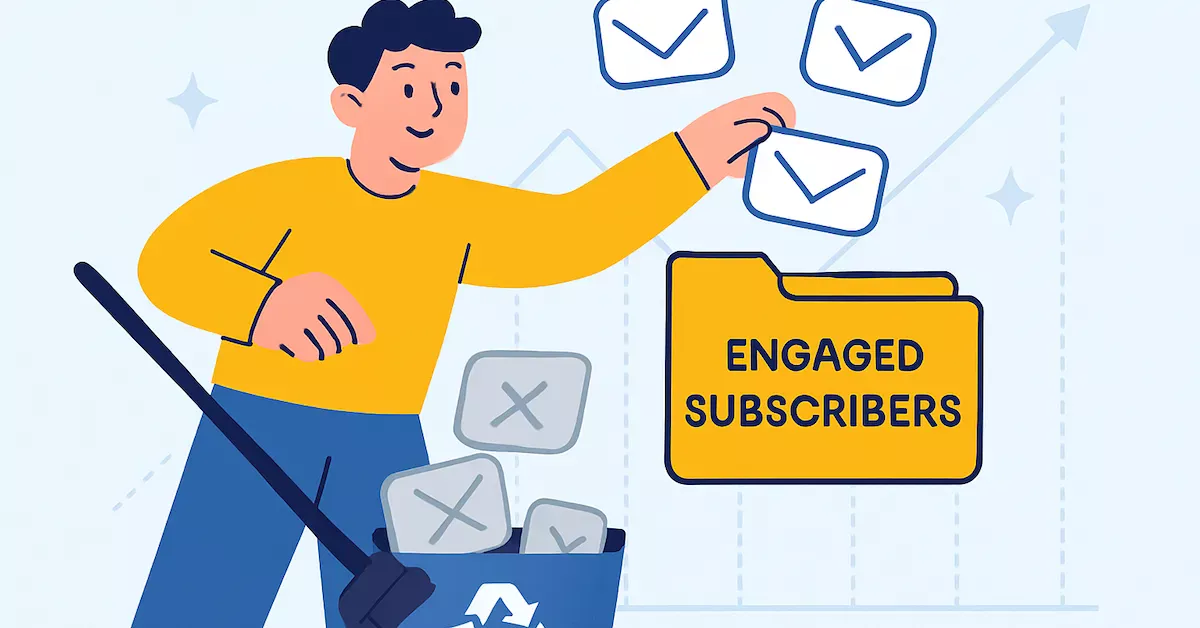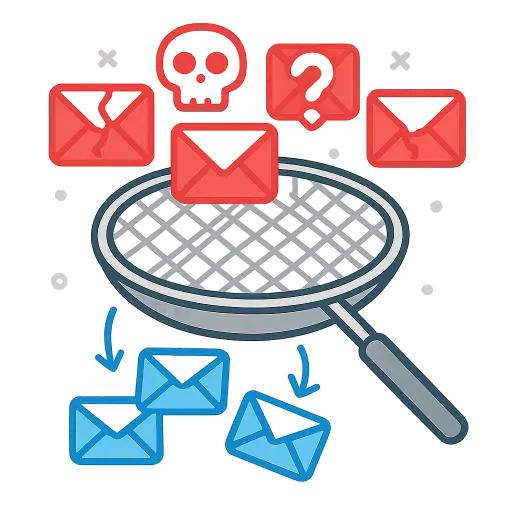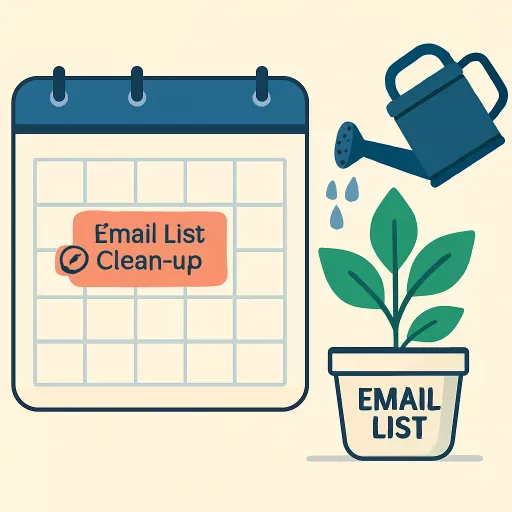Maintaining a clean email list is the secret sauce behind successful email marketing. If you want your messages to land in inboxes (not spam folders), boost open rates, and keep your sender reputation sparkling, regular list cleaning is a must. In this investigation, I’ll walk you through the essential steps for cleaning your email list, why it matters, and how to keep your list healthy for the long haul.

Why Cleaning Your Email List Matters
Let’s be honest—email marketing is only as good as the list you’re sending to. Over time, even the best lists collect inactive subscribers, invalid addresses, and the odd spam trap. If you keep sending to these contacts, you’ll see your deliverability drop, bounce rates rise, and your sender reputation take a hit. According to VerifyMagically, up to 40% of your list can become disengaged every year!
Cleaning your list isn’t just about numbers—it’s about making sure your emails reach real, interested people. Here’s what you stand to gain:
- Improved deliverability: Fewer bounces and spam complaints mean more emails in inboxes.
- Accurate engagement metrics: Get a true picture of your open and click rates.
- Lower costs: Most email platforms charge by list size, so why pay for dead weight?
- Better ROI: Focus your efforts on subscribers who actually want to hear from you.
Step 1: Analyse Your Current Email List
Before you start scrubbing, take a good look at your list. Check your engagement metrics—open rates, click-through rates, and bounce rates. If your open rate is lagging (below 17-28% is a red flag), or your bounce rate is above 2%, it’s time for a clean-up (See EmailListVerify).
Identify Inactive Subscribers
Inactive subscribers are those who haven’t opened or clicked your emails in the last 3-6 months. Segment these contacts so you can target them with re-engagement campaigns or remove them if they remain unresponsive.
Spot Hard and Soft Bounces
- Hard bounces: Permanent delivery failures (e.g., invalid or non-existent addresses). Remove these immediately.
- Soft bounces: Temporary issues (e.g., full inboxes). If an address keeps soft bouncing, consider removing it.
Step 2: Remove Invalid and Fake Email Addresses

Invalid and fake addresses are a major cause of bounces. Use an email verification tool like ZeroBounce, Hunter, or NeverBounce to scan your list for:
- Misspelled or non-existent domains
- Disposable or temporary emails
- Spam traps
Once flagged, delete these addresses to protect your sender reputation.
Watch for Typos
Manual review can catch obvious typos (like “@gnail.com” instead of “@gmail.com”). Correct what you can, but don’t hesitate to remove addresses that look fake or nonsensical.
Step 3: Eliminate Duplicates, Unsubscribes, and Spam Complaints
Duplicates inflate your list and skew your metrics. Use your email platform or a spreadsheet tool to remove them. Also, make sure to promptly delete:
- Unsubscribed contacts: Sending to these can land you in legal hot water.
- Spam complaints: Too many, and your emails will be blocked by ISPs (See VerifyMagically).
Step 4: Re-Engage Inactive Subscribers
Before you say goodbye to inactive subscribers, try to win them back with a re-engagement campaign. Send a friendly email with a catchy subject line like “We Miss You!” or “Are You Still Interested?” Offer an incentive—maybe a discount or exclusive content—to encourage them to stay.
If they don’t respond after a couple of attempts, it’s time to remove them from your active list. You can move them to a suppression list for future win-back campaigns if you like.
Step 5: Segment and Personalise Your Cleaned List
Once your list is clean, segment it for better targeting. Group subscribers by:
- Activity level (active, occasional, lapsed)
- Demographics (age, location)
- Behaviour (purchase history, content clicks)
Personalise your emails based on these segments. For example, send loyalty offers to frequent buyers or region-specific news to local subscribers. Personalisation boosts engagement and makes your emails feel more relevant (See HostAdvice).
Step 6: Maintain List Hygiene Regularly

Cleaning your list isn’t a one-off job. Schedule a clean-up every 3-6 months to keep things fresh (See Scrubby.io). Set reminders or use automation tools to flag inactive subscribers and run regular verifications.
Use Double Opt-In
Double opt-in requires new subscribers to confirm their email address before joining your list. This simple step drastically reduces fake sign-ups and keeps your list healthy (See SITE123).
Monitor Key Metrics
Keep an eye on your bounce rates and spam complaints. If you notice a spike, act fast—clean your list and review your content strategy.
Step 7: Use the Right Tools
There are plenty of tools to help you keep your list in top shape:
- Email verification: EmailListVerify, ZeroBounce, NeverBounce
- List management: Most major email platforms (like Mailchimp, ActiveCampaign) offer built-in cleaning features.
- Automation: Set up workflows to automatically remove or flag inactive subscribers.
Email List Cleaning Best Practices
- Clean your list every 3-6 months.
- Use reliable verification tools.
- Segment and personalise your campaigns.
- Remove unsubscribes and spam complaints promptly.
- Monitor engagement metrics and act on the data.
- Protect your sender reputation by avoiding risky practices.
- Keep your data secure and comply with privacy regulations.
Wrapping Up
A clean email list is the foundation of effective email marketing. By regularly removing inactive and invalid subscribers, you’ll improve your deliverability, boost engagement, and get more value from every campaign. Make list cleaning a habit, and you’ll see the results in your open rates, conversions, and bottom line.

